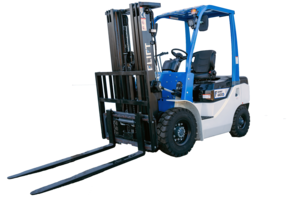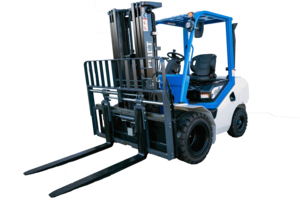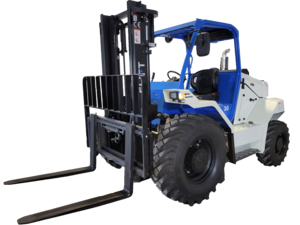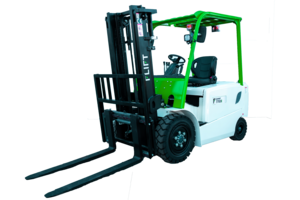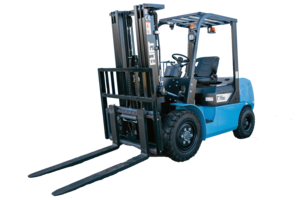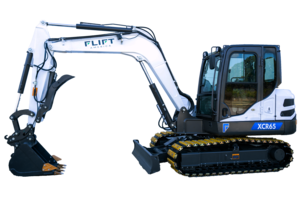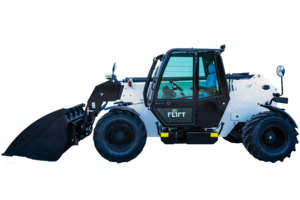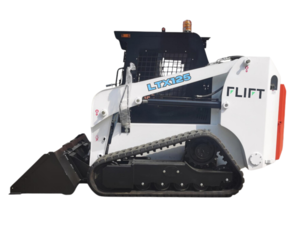FAQ
You have questions? Here's some answers!
Topics
Expand
Close All
How many steps does a qualified electric reach forklift maintenance take?
With the continuous development of society, people are paying more and more attention to their own health, and physical examination is becoming more and more important in daily life. Physical examination can timely find the health risks or existing health problems, and improve the way of life to promote health.This is true for people, as it is for forklifts. Regular maintenance can not only maintain the good running state of forklift, but also prevent the occurrence of faults in advance.What is the complete forklift maintenance process?
1. Visually inspect the appearance of the forklift to see if there is any damage;2. Conduct driving test and all function check on forklift truck;3. Move the forklift to the maintenance area on the horizontal ground;4. Complete the hazard control process: listing and locking process, wheel blocking process and capacitor discharge process;5. Remove all cover plates of the forklift truck;6. Clean the whole forklift with low pressure air;7. Clean floor dust; 8. Tighten/adjust/lubricate/inspect all forklift parts and install all cover plates;9. Clean the forklift;10. Organize tools and clean maintenance areas;11. Remove wheel stopper/gantry support block, lock and hang device and connect battery;12. Test the forklift again to make sure it is working properly.
In today's increasingly uncertain warehouse operation, it is crucial to keep forklifts in good working condition. Proper maintenance helps ensure that forklifts operate as intended, thereby improving operational efficiency and employee safety.
1. Visually inspect the appearance of the forklift to see if there is any damage;2. Conduct driving test and all function check on forklift truck;3. Move the forklift to the maintenance area on the horizontal ground;4. Complete the hazard control process: listing and locking process, wheel blocking process and capacitor discharge process;5. Remove all cover plates of the forklift truck;6. Clean the whole forklift with low pressure air;7. Clean floor dust; 8. Tighten/adjust/lubricate/inspect all forklift parts and install all cover plates;9. Clean the forklift;10. Organize tools and clean maintenance areas;11. Remove wheel stopper/gantry support block, lock and hang device and connect battery;12. Test the forklift again to make sure it is working properly.
In today's increasingly uncertain warehouse operation, it is crucial to keep forklifts in good working condition. Proper maintenance helps ensure that forklifts operate as intended, thereby improving operational efficiency and employee safety.
What are some forklift common fault analysis and treatment methods?
1. The oil return pipe of the lifting cylinder is seriously leaking and automatically descends
The main reason is that the oil seal between the lifting cylinder and the piston rod is damaged: replace the corresponding oil seal, but it is necessary to pay attention during the implementation process, and the staff often do not work according to the methods and skills. Therefore, it is necessary to formulate the corresponding fixing ring of the hard iron sheet for the live port, cover the oil seal, clamp it with pliers and send it to the cylinder, so as to prevent it from being wasted.
2. The left and right lift piston rods are not lifted synchronouslyThe cause of the problem is the expansion of the nylon guide sleeve between the two: during the implementation process, the nylon guide sleeve is effectively integrated. Guarantee the value of its expansion, and there will be no problems in the application process.
3. No lift, no directionImperfect hydraulic oil, contaminants in it, cracked hydraulic oil filter: You can replace the hydraulic oil with a new one in time. Or you can replace the effective filter in time.
4. The steering wheel is not flexible when turning the steering wheelThe reason is that the positioning reed of the steering gear is broken and the steering cylinder is leaking: the solution is to turn the direction in place, and if the direction is too light, it can be clear that there is a problem with the positioning reed, and it is enough to replace it. If you feel that there is a certain force when turning the steering wheel, but the steering wheel is very inflexible, and can be rotated 360 degrees to the left or right, that is to say, there is a problem with the oil seal on the piston in the steering cylinder. This leads to internal leakage, and the oil seal needs to be replaced.
5. The situation of shaking during the lifting of the piston rod of the lifting cylinderThe hydraulic oil in the oil tank is not perfect, which leads to problems with the pressure of the hydraulic pump. After that, it is necessary to make sure that there is air in the hydraulic pipeline to the piston section of the oil cylinder: increase the hydraulic oil. And the oil cylinder is raised to the top and then dropped to the bottom, and the air existing in the hydraulic pipeline can be discharged by repeated operations, so as to effectively solve the problem.
The main reason is that the oil seal between the lifting cylinder and the piston rod is damaged: replace the corresponding oil seal, but it is necessary to pay attention during the implementation process, and the staff often do not work according to the methods and skills. Therefore, it is necessary to formulate the corresponding fixing ring of the hard iron sheet for the live port, cover the oil seal, clamp it with pliers and send it to the cylinder, so as to prevent it from being wasted.
2. The left and right lift piston rods are not lifted synchronouslyThe cause of the problem is the expansion of the nylon guide sleeve between the two: during the implementation process, the nylon guide sleeve is effectively integrated. Guarantee the value of its expansion, and there will be no problems in the application process.
3. No lift, no directionImperfect hydraulic oil, contaminants in it, cracked hydraulic oil filter: You can replace the hydraulic oil with a new one in time. Or you can replace the effective filter in time.
4. The steering wheel is not flexible when turning the steering wheelThe reason is that the positioning reed of the steering gear is broken and the steering cylinder is leaking: the solution is to turn the direction in place, and if the direction is too light, it can be clear that there is a problem with the positioning reed, and it is enough to replace it. If you feel that there is a certain force when turning the steering wheel, but the steering wheel is very inflexible, and can be rotated 360 degrees to the left or right, that is to say, there is a problem with the oil seal on the piston in the steering cylinder. This leads to internal leakage, and the oil seal needs to be replaced.
5. The situation of shaking during the lifting of the piston rod of the lifting cylinderThe hydraulic oil in the oil tank is not perfect, which leads to problems with the pressure of the hydraulic pump. After that, it is necessary to make sure that there is air in the hydraulic pipeline to the piston section of the oil cylinder: increase the hydraulic oil. And the oil cylinder is raised to the top and then dropped to the bottom, and the air existing in the hydraulic pipeline can be discharged by repeated operations, so as to effectively solve the problem.
What are the common causes of diesel forklift engine cylinder block damage and gas cover cracks?
(1) Congenital cylinder depression. When the cylinder head is cast, the cylinder head is cracked due to the excessive wall thickness difference and the excessive interference of the valve seat ring.
(2) Overload. The overloading of diesel forklifts makes the diesel engine work under heavy load for a long time, and the temperature of the body rises, which causes the cylinder block and cylinder head to have excessive thermal load and causes cracks. The cracks are generally located at the bridge of the nose between the intake and exhaust valves and at the triangle where the injector is installed.
(3) Add cold water in winter. When the diesel engine is overheated in winter or on the way, do not rush to add cold water, because adding cold water at this time will cause the temperature of the diesel engine to drop suddenly, causing the cylinder block and cylinder head to deform sharply and cause cracks.
(4) Improper maintenance of the forklift, such as the cylinder head threads or nuts are tightened in the specified order, times and torque, the height of the cylinder liner above the upper plane of the cylinder block is too much or the height difference of each cylinder is too large, the cylinder is disassembled and assembled. body or cylinder head is hit, etc. In addition, the installed cylinder head gasket does not meet the requirements, or the cylinder head gasket loses its elasticity and blows air over time, which also causes cracks in the lintel between the two cylinders.
Judgment methodCracks in the cylinder block and cylinder head of the forklift diesel engine will cause water leakage, tax leakage and air leakage. These phenomena can be used to determine where cracks occur. Cracks in the water jacket often cause the oil level to rise, but it is necessary to correctly distinguish whether it is the breakdown of the cylinder head gasket or the water leaking into the crankcase from the crack of the water jacket. Due to the different parts of the crack, the phenomenon is also different. The difference is: cracks near the oil passage are often accompanied by oil leakage and oil pressure drop; cracks near the water jacket are often accompanied by water leakage. If the cylinder liner is cracked, the diesel engine will not work smoothly, the cylinder pressure will drop, and water will be discharged from the exhaust pipe.
Repair methodFor cracks in the parts with high temperature and high stress (such as near the combustion chamber and valve seat), the cracks in other parts can be repaired by welding, and the epoxy resin can be used to repair the cracks; When the crack length is less than 50mm, it can also be repaired by screw filling method; when the crack is long or there are many small cracks concentrated together, or there is a hole, it can be filled with a patch.
(2) Overload. The overloading of diesel forklifts makes the diesel engine work under heavy load for a long time, and the temperature of the body rises, which causes the cylinder block and cylinder head to have excessive thermal load and causes cracks. The cracks are generally located at the bridge of the nose between the intake and exhaust valves and at the triangle where the injector is installed.
(3) Add cold water in winter. When the diesel engine is overheated in winter or on the way, do not rush to add cold water, because adding cold water at this time will cause the temperature of the diesel engine to drop suddenly, causing the cylinder block and cylinder head to deform sharply and cause cracks.
(4) Improper maintenance of the forklift, such as the cylinder head threads or nuts are tightened in the specified order, times and torque, the height of the cylinder liner above the upper plane of the cylinder block is too much or the height difference of each cylinder is too large, the cylinder is disassembled and assembled. body or cylinder head is hit, etc. In addition, the installed cylinder head gasket does not meet the requirements, or the cylinder head gasket loses its elasticity and blows air over time, which also causes cracks in the lintel between the two cylinders.
Judgment methodCracks in the cylinder block and cylinder head of the forklift diesel engine will cause water leakage, tax leakage and air leakage. These phenomena can be used to determine where cracks occur. Cracks in the water jacket often cause the oil level to rise, but it is necessary to correctly distinguish whether it is the breakdown of the cylinder head gasket or the water leaking into the crankcase from the crack of the water jacket. Due to the different parts of the crack, the phenomenon is also different. The difference is: cracks near the oil passage are often accompanied by oil leakage and oil pressure drop; cracks near the water jacket are often accompanied by water leakage. If the cylinder liner is cracked, the diesel engine will not work smoothly, the cylinder pressure will drop, and water will be discharged from the exhaust pipe.
Repair methodFor cracks in the parts with high temperature and high stress (such as near the combustion chamber and valve seat), the cracks in other parts can be repaired by welding, and the epoxy resin can be used to repair the cracks; When the crack length is less than 50mm, it can also be repaired by screw filling method; when the crack is long or there are many small cracks concentrated together, or there is a hole, it can be filled with a patch.
What is the repair method and replacement condition of hydraulic connecting pipe of forklifts?
The accessories of the hydraulic system of the forklift connect the oil pipe and the corresponding parts through threaded joints, union nuts and bolts. The oil pipe is divided into two types: rubber hose and seamless steel pipe. The oil pipe of the forklift is most likely to fall off or be damaged, and the oil pipe joint and the bending place.
1. The outer rubber of the high-pressure hose fails due to cracking and swelling. Damaged and poorly sealed ones should be replaced.
2. The rupture of the rubber hose is mostly the result of bending, twisting and poor terminal fixation. When repairing, the damaged part of the hose can be removed, and the qualified parts can be connected by detachable or non-detachable methods. The repaired hose is not There should be oil leakage.
3. There should be no cracks at the end of the compression ring and the conduit.
4. When there is irreparable damage to the steel pipe, it should be replaced. If there are local cracks, it can be repaired by welding, or the damaged part can be sawed off, and then a new section of steel pipe can be welded.
5. Aluminum or copper gaskets should be installed between the pipe joints of forklift accessories, and the gaskets should be flat and should not have depressions.
6. The oil pipe should be replaced if it has the following defects.
The inner and outer walls of the curved part of the pipe are serrated, the curve is irregular, the inner wall is twisted or crushed, and the corrugations are uneven;The surface of the pipe is concave until the ratio of the difference between the diameter of the pipe and the original diameter is greater than 10%;The ratio of the diameter difference of the bending part of the pipe to the original diameter is greater than 10%;The minimum outer diameter of the flat curved part is less than 70% of the outer diameter of the original tube.
1. The outer rubber of the high-pressure hose fails due to cracking and swelling. Damaged and poorly sealed ones should be replaced.
2. The rupture of the rubber hose is mostly the result of bending, twisting and poor terminal fixation. When repairing, the damaged part of the hose can be removed, and the qualified parts can be connected by detachable or non-detachable methods. The repaired hose is not There should be oil leakage.
3. There should be no cracks at the end of the compression ring and the conduit.
4. When there is irreparable damage to the steel pipe, it should be replaced. If there are local cracks, it can be repaired by welding, or the damaged part can be sawed off, and then a new section of steel pipe can be welded.
5. Aluminum or copper gaskets should be installed between the pipe joints of forklift accessories, and the gaskets should be flat and should not have depressions.
6. The oil pipe should be replaced if it has the following defects.
The inner and outer walls of the curved part of the pipe are serrated, the curve is irregular, the inner wall is twisted or crushed, and the corrugations are uneven;The surface of the pipe is concave until the ratio of the difference between the diameter of the pipe and the original diameter is greater than 10%;The ratio of the diameter difference of the bending part of the pipe to the original diameter is greater than 10%;The minimum outer diameter of the flat curved part is less than 70% of the outer diameter of the original tube.
